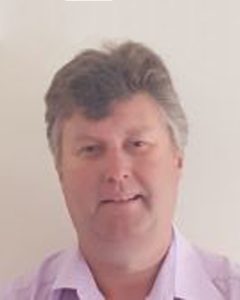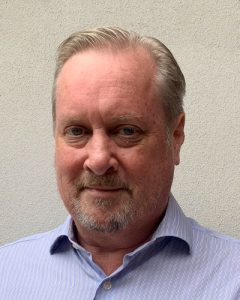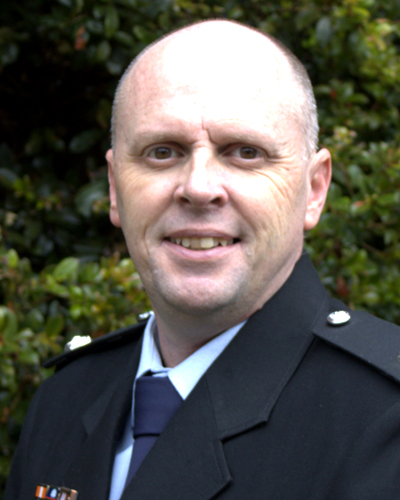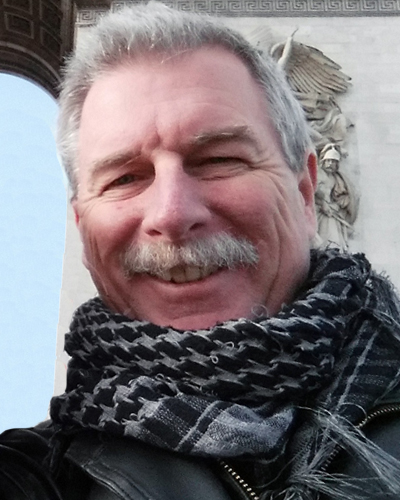Critical Communications Conference: Sydney, May 2024

Get ready Sydney, we’re coming back! Don’t miss the ARCIA NSW Critical Communications Conference and NSW State Networking Dinner on 30 May, 2024!
Following a fantastic conference in 2023, we’re headed back to NSW to deliver more industry-related content to the critical communications community.
Book your ticket today >>
Join us on Thursday, 30th May 2024 for our second Critical Communications Conference in Sydney at the NSW Teachers Federation Conference Centre. Finish off the day by getting together with your peers that evening at the NSW Networking Dinner, held at the Sydney Masonic Centre. The winner of the NSW State Industry Advancement of the Year Award will be announced at the Networking Dinner. You can make a nomination for this State Award via the ARCIA website until the 10 May, 2024.
The Sydney conference features a half-day workshop running concurrently with a jam-packed stream of radio and critical communications presentations, closing out with an expert panel.**
Numbers are strictly limited due to venue capacity for the conference and the dinner, so book your seats for you and your colleagues ASAP. Discounts apply on all rates for current ARCIA Members. Not a member yet? Join ARCIA now >>
Date: Thursday, 30th May, 2024
Conference venue: NSW Teachers Federation Conference Centre
Time: 9:00 am-5:00 pm
Program: Download the agenda >>
Half-day workshop | 9:00 am-12.30 pm
Conference stream | 9:00 am-5:00 pm
- ARCIA market update: Global trends, challenges and opportunities
- Innovative Collaborations Solving Complex Connectivity Challenges
- What Is TAK and Why Aren’t We Using It?
- Considerations for the Transition to Hybrid PoC and Narrowband Operation
- Advancing Interoperability in Emergency Response Communications
- Spectrum for Wireless Broadband – An Update
- The Future of Australian PSMB
- Improving Radio and Accessory Design for Firefighters – A Challenge from the End user
- International Critical Communications Directions and Progress Towards MCX Broadband
- Human-centred design of control centres
Expert Panel
Book your conference ticket now >>
Sydney 2024 half-day workshop
Workshop: Private LTE/5G: The Fundamentals of Technology and System Designs
Presented by: Simon Lardner | Head of Wireless business—Vocus, Vocus
This course will provide students with the skills to be able to outline the key elements and components of a typical wireless broadband communication system. Students will be able to develop the block diagrams and system elements for designing a basic system and demonstrate the expected requirements and outcomes of such a system, both in basic and extended formats.
On completion students will be able to understand and identify the various elements associated with system design, including the relevant spectrum sectors that are associated with wireless broadband and understand the potential outcomes that a relevant to all options that are applicable.
The course will cover:
- History of LTE and 5G technology developments
- Private LTE/5G and the mobile market segments.
- The benefits of industrial LTE/5G systems
- Towards the future and 5G and more
- Basic system design & building blocks
- Public safety applications of LTE/5G
Sydney 2024 conference stream
ARCIA Market Update: Global trends, challenges and opportunities
Presented by: Hamish Duff | President ARCIA
During this session, Hamish Duff, President ARCIA, will consider local and international trends in the radio and critical communications sector, with particular focus on the following areas:
- Market response to the needs of customers and the availability of new technologies
- New terminals, new connectivity options and new collaborative tools
- The challenge of modern vehicle fit outs with new technology to integrate
- Satellite continues to provide new options
- Modern control rooms – increasing levels of video and new technologies: Managing these environments and looking after operators
- ARCIA work to review Broadband spectrum and the impact of new ACMA licencing
- ARCIA MoU with 450 Alliance – aiming to understand potential future impacts for Sub 500 MHz
———————————————————————————————————————————-
Innovative Collaborations Solving Complex Connectivity Challenges
Presented by: Daniel Wright | Director of Product Management, NSW Telco Authority
Inadequate connectivity remains a significant hurdle impacting essential services and the overall quality of life for residents and businesses across NSW. The NSW Government is committed to narrowing the digital divide, particularly in regional communities where insufficient fixed and mobile network coverage poses a considerable challenge. Recognising the critical role of telecommunications in ensuring community safety during natural disasters, the government aims to address these challenges collaboratively.
This presentation will delve into the joint efforts spearheaded by NSW Telco Authority (NSWTA) in partnership with industry stakeholders to design and implement groundbreaking solutions to enhance statewide connectivity. Through co-design and experimentation, NSWTA explores emerging technologies that can support Emergency Services Organisations (ESOs), government agencies, and local communities by uplifting poor regional connectivity and effectively delivering digital government services. These experiments, conducted across diverse geographic terrains, simulate real-life scenarios and include technologies such as Long-Term Evolution, Low Earth Orbit (LEO) satellite, mesh wi-fi, and aerial hosts like drones.
The data and insights gathered have helped identify the most suitable technologies and informed recommendations for government investments in innovative and scalable solutions that will shape the future of connectivity across NSW. The outcomes of the experiments have helped shape the LEO satellite reseller market in NSW and redefine how the NSW Government adopts these products .
This approach not only provides a model for addressing connectivity challenges with an all-of-government approach but also exemplifies how public sector agencies can effectively collaborate with private sector partners to drive innovation and excellence in public service. This work underscores the importance of partnerships in overcoming complex challenges and highlights the potential of collective problem-solving for the benefit of emergency services, government agencies, and communities at large.
———————————————————————————————————————————-
What is TAK and Why Aren’t We Using It?
Presented by: Matt Franks | Senior Solutions Engineer, Hypha
TAK, short for Tactical Assault Kit, is a software application primarily utilised by military and law enforcement agencies for enhanced situational awareness and mission planning.
TAK provides users with tools for communication, collaboration, and decision-making in dynamic and often high-pressure operational environments. It integrates various data sources such as maps, imagery, video streaming, GPS tracking and tactical information into a single, user-friendly interface.
The versatility of TAK extends beyond traditional military operations, with applications in response to natural disasters, search and rescue, law enforcement and broader public safety. Its ability to integrate with existing hardware and software systems makes it adaptable to a wide range of scenarios and operational needs, improving the effectiveness and safety of mission-critical operations.
———————————————————————————————————————————-
Considerations for the Transition to Hybrid PoC and Narrowband Operations
Presented by: David Deacon | CEO, Etherstack
Interworking between the narrowband and broadband communications domains has now arrived and is now actively being deployed world-wide using standards-based technologies.
Yet, the technology is still in its infancy and important differences exist in standards development approaches as well as between implementations being seen deployed in enterprise (eg resources and transportation industries) as compared to public safety grade networks.
In this talk, David Deacon CEO of Etherstack (ESK:ASX) will discuss real-world deployments of LMR-LTE interworking at ATT FirstNET in the US, as well as trials undertaken in Australia and elsewhere, and will give insights into what the future looks like for both narrow- and broadband communications solutions and the options for transitioning to Hybrid PTToC and broadband, whilst still recognising the unique challenges presented in Australia.
Etherstack is a wireless communications technology specialist that has developed and licensed APCO P25, TETRA and DMR standards-based technologies to over 20 radio equipment manufacturers world-wide.
———————————————————————————————————————————-
Advancing Interoperability in Emergency Response Communications
Presented by: Dr Paul Elmes | Managing Director (Asia-Pacific), Tait Communications
The foremost challenge facing first responders, as it has been for the past five decades, is the issue of interoperability, or more precisely, the lack of interoperability. Interoperability is the ability for different agencies, from different jurisdictions, to exchange voice communication on demand and in real-time – usually to coordinate the response to an accident or natural disaster.
This challenge has been a known issue in Australia since the time of Cyclone Tracy’s devastation of Darwin in 1974. Subsequently, it has been repeatedly cited in inquiries and Royal Commission reports following natural disasters, particularly during the 2019-2020 bushfire season, as a significant impediment to coordinated response efforts.
The transition from analogue to digital technology has brought the adoption of open standard protocols. In Australia and New Zealand, public safety organisations opted for the North American P25 standard, while non-public safety entities turned to the European Digital Mobile Radio (DMR) standard as a more cost-effective alternative to P25. This divergence has led to a diverse array of user groups, including utilities, Local Government Authorities, transportation organisations, and mining operations, embracing DMR technology for their critical communications.
This presentation will explore how the issue of interoperability is being addressed by manufacturers and how recent advances in technology are permitting devices that bridge the interoperability requirements of both P25 and DMR users, who need to exchange voice communication. Such devices are expected to significantly enhance inter-agency and inter-state radio communication, potentially rendering moot the recurrent recommendations for interoperability in the inquiry and commission reports.
———————————————————————————————————————————-
Spectrum for Wireless Broadband – An Update
Presented by: Andrew May | Executive Manager, Spectrum Engineering
An update on ACMA’s progress in the “3 GHz” band, where services are licensed under the new AWL type – i.e. “Area Wide Licence”. ACMA have already granted AWLs in remote parts of Australia, and are now processing applications received in the recent metro-rural licensing window.
How do you “register” services in your AWL spectrum? Will more AWL spectrum be available in the future?
———————————————————————————————————————————
The Future of Australian PSMB
Presented by: Kylie De Courteney | Managing Director, NSW Telco Authority
The Commonwealth and Australian state and territory governments are working together through the National PSMB taskforce to build the foundations for Australian Public Safety Mobile Broadband capability.
PSMB will deliver a mission-critical, national mobile broadband capability for exclusive and prioritised use by Emergency Services Organisations. This will enable greater use of data-heavy technologies, improve situational awareness, and provide a standardised environment for coordination of multi-agency responses.
In this presentation, NSW Telco Authority Managing Director Kylie De Courteney will outline the need for and benefits that the PSMB will bring to our first responders, providing a glimpse into the future uses of PSMB and current examples from around the globe.
———————————————————————————————————————————
Improving Radio and Accessory Design for Firefighters – A Challenge from the End user
Presented by: Tony Hine | Assistant Operational Communications & System Officer for Fire & Rescue NSW
Fire & Rescue NSW are the fourth largest fire service globally, covering 800 000 sq km and attending in excess of 250 000 calls annually. Fire & Rescue NSW are one of the largest providers of rescue services globally, supporting 80 General Land Rescue stations and an Internationally deployable Urban Search & Rescue capability. Further, Fire & Rescue NSW is now operating in support of off-shore marine HAZMAT operations in support of AMSA.
This session will explore how FRNSW currently utilise their existing radio technologies to work in multiple domains outside of traditional firefighting, and the technological gaps that remain to make radios a ubiquitous communications path in all situations.
———————————————————————————————————————————-
International Critical Communications Directions and Progress Towards MCX Broadband
The presentation will provide an update on global collaborations shaping open broadband standards, spectrum discussions, testing, interoperability and certification, security, industry innovation and real-world deployment progress in critical industry sectors including government, public safety/civil defense, transport and utilities.
The presentation will cover some of the priority areas where the global community is cooperating and prioritising efforts to ensure solutions evolve to meet operational capability for business- and mission-critical end users.
Hear what have been some of the key topics making headlines at major global events such as MWC Barcelona and CCW2024 Dubai, and why this is important in an Australian context and why Australia is important to global efforts.
———————————————————————————————————————————
Human-centred design of control centres
Presented by: Russell Ockendon | Executive Director, Control Centres Australia
“Without radio communications, no plane takes off, no ship sails, and no train leaves the station.”
Neither do these things happen effectively if the humans who are doing them are not effectively supported to do their jobs to the very best of their abilities.
And we must therefore recognise and implement human-centred design, in the very earliest phases of the project – VESDA: Very Early Schematic Design & Advice.
Control Centre stakeholders can be certain that no control room operator, or manager, or supervisor, can be effective in their job if they are not supported by an effective process of discovering, defining and delivering operational and built environments, which in turn support them.
This is human factors, ergonomics and built environment integration, and at the centre of the process of design is the human. Systems must be designed for the human to inhabit. The human must not be expected to adapt to inhabit the design. The control centre must also work at its best under duress. It is not a successful design which supports seamless operation under business-as-usual, but struggles under pressure.
To successfully achieve this a CRIOP Analysis must be undertaken – Crisis Intervention & Operability Analysis – mocking up scenarios, observing behaviours and performances, logging outcomes and learning from these lessons.
In this session Russell will present, with case studies, a system-based approach to the ergonomic design of control centres, based upon the International Standard ISO 11064 which, among other things, requires stakeholders to participate, and record, an integrated, collaborative and iterative process of design.
———————————————————————————————————————————-
A Developing Critical Communications Landscape: The Challenges and Opportunities that come with New Technology and More Choice
Moderated by: Chris Stevens | Managing Director, CartGIS Pty Ltd
As we’ve heard today from our experts, when it comes to delivering professional communications solutions for your customers, your organisations and your colleagues, there has never been more choice. In determining the right fit for your use case, there are many factors that must be considered, including cost, delivery time and performance, along with priorities in terms of end user needs.
During this session, our expert panel will consider the current and developing critical communications landscape and how a growing list of available solutions creates opportunities, but also presents challenges.
Conference Chair
Chris Stevens
Managing Director, CartGIS | Chris Stevens is Managing Director of CartGIS Pty Ltd, an emergency management, GIS and mapping and communications consultancy company based in Melbourne. Chris has extensive experience in LMR network design, planning and implementation as well as GIS and mapping application design and commissioning. CartGIS Pty Ltd also specialises in bespoke training and education for the critical communication community. Chris has extensive qualifications and experience in secondary, tertiary and workplace training and education, which, coupled with his communication experience, delivers industry and client focused outcomes. Chris is also Co-Vice President of ARCIA, and Sub-committee convenor of training and education for ARCIA. |
Presenter Biographies
Simon Lardner
Head of Wireless business—Vocus, | Simon is the Head of Wireless business — Vocus at Vocus/Challenge Networks, a telecommunications system integrator specialising in the design, build and management of small-scale carrier networks around the world. More recently, Challenge has become a world leader in the deployment of private LTE networks for the resources sector. Simon has over 27 years of international experience in the telecommunications industry specialising in mobile network design and implementation. |
Hamish Duff
Managing Director, Mastercom | President, ARCIA | Hamish is the Managing Director of Mastercom and a founding Director of the Orion Network. A specialist in wide–area radio networks, Hamish has a genuine understanding of the pressures faced out in the field and the role that efficient communications plays to help people every day. With a career in communications spanning more than 40 years, Hamish is skilled in making the complex, simple–engineering communication solutions to support the needs of all users—from the control room to the field. |
Daniel Wright
Director of Product Management, | Daniel is the Director of Product Management at NSW Telco Authority and Non-executive Board Member of the Connectivity Innovation Network, is responsible for working with industry and academia to innovate, experiment and develop connectivity solutions that deliver improved digital outcomes for government agencies and the people of NSW. In his role, Daniel focuses on tackling digital connectivity challenges, particularly in regional areas during natural disasters. His team’s work on leveraging satellite technology to provide critical communication channels is vital in maintaining connectivity for frontline emergency personnel, government agencies and communities when they need a robust means of communication the most. |
Matt Franks
Senior Solutions Engineer, Hypha | Matt Franks is a former police officer with the Queensland Police Service, with 14 years operational service, including 6 years in uniform policing and 8 years in Specialist Operations. During his time in Specialist Operations, Matt was a Sergeant Team Leader of a technical team responsible for the research, development and practical implementation of technical solutions covering voice communications, data connectivity, secure video transmission / distribution and drone operations. His work often supported the investigation of high profile and high-risk policing operations. Matt has undertaken policing operations in several states around Australia, collaborating with both domestic and international law enforcement and intelligence agencies, giving him a true in-depth, operational understanding of the importance of reliable and interoperable communications networks. During his time as a police officer, he has been recognised on a national level for his development work in technical policing and expertise provided in several natural disasters and major policing operations. In early 2023 Matt left the Queensland Police Service to take up a role with Hypha Solutions where he applies his knowledge and expertise gained from policing, combined with his experience as a qualified Auto Electrician in the development of communication and connectivity solutions for Public Safety Agencies. |
David Deacon
CEO, Etherstack Plc | David Deacon founded Etherstack in Sydney in 1995 and oversaw the company’s expansion around the world including the establishment of R&D offices in New York, Yokohama and Reading (UK). David’s original vision for Etherstack was as a specialist wireless technology licensing company providing underlying technologies for the land mobile radio and defence communications industries. As the company grew, Etherstack branched out into transceiver design, manufacturing and deployment of complete turnkey digital radio networks. In recent years, Etherstack has developed underlying network components for 3GPP MCX networks and is currently the lead supplier of the LMR InterWorking function for the AT&T FirstNet project in the United States. The company has also been at the forefront of PTT over Satellite solutions and has deployed a P25 over Satellite solution for the Royal Canadian Mounted Police inside the Arctic Circle. |
Dr Paul Elmes
Managing Director (Asia-Pacific), Tait Communications | Originally from the UK, Paul emigrated to New Zealand in 2006 where he worked for Tait Communications as a product manager and principal engineer until early 2010. An engineer by training, Paul began his career as a research scientist at the UK’s Defence Evaluation and Research Agency. During this time, Paul completed a doctorate on the development of novel sonar transducers for the Royal Navy. Paul has a broad background of experience across both the public and private sectors, holding senior positions in government departments, educational establishments and commercial enterprises. Paul returned to Tait Communications in 2016 as the Product Line Manager for the P25 portfolio. Most recently, he was the VP of Product Management, responsible for Tait’s global product portfolio. |
Andrew May
Executive Manager, Spectrum Engineering Australia | Andrew is the Executive Manager of Spectrum Engineering Australia and has been with Spectrum Engineering for 19 years. During this time he has amassed a broad and intimate working knowledge of the regulatory environment and the coordination and licensing requirements for radio services in Australia. He now leads a team of professional engineers who provide licensing solutions to all sectors of the radio industry including the major carriers, government and the private sector. Andrew holds a Bachelor of Computer Engineering with First Class Honours from the University of Wollongong. He holds accreditation under the Australian Communications and Media Authority to issue Frequency Assignment Certificates and Interference Impact Certificates, and holds Approved Radio Certifier (ARC) status under New Zealand’s Radio Spectrum Management (RSM) branch. |
Kylie De Courteney
Managing Director, NSW Telco Authority | Kylie De Courteney is NSW Telco Authority’s Managing Director, a role she has held since June 2019. Leading a $1.5 billion portfolio of NSW Government connectivity projects, Ms De Courteney is committed to bridging the digital divide to address connectivity challenges and is passionate about the digital transformation of government and customer-centric service delivery. Ms De Courteney serves as an ex officio member on NSWTA’s Advisory Board and is a senior executive with more than 15 years’ public sector experience with expertise in complex program and policy delivery and organisational transformation. |
Tony Hine
Assistant Operational Communications & Systems Officer, Fire & Rescue NSW | Tony is the Assistant Operational Communications & System Officer for Fire & Rescue NSW. A career firefighter and volunteer with over 30 years experience both operationally and at senior command levels with emergency services, including international responses in support of humanitarian efforts. Tony brings a strong background in making complex communications systems friendly for non expert users and identifying and seeking out innovative solutions to communications at first responder and incident command level, especially those in remote and austere environments. |
Bidar Homsey
Principal Consultant & Head of Business Development, Public Safety, Frequentis Australia | Board Director, Australasian Critical Communications Forum (ACCF) | Bidar is the Principal Consultant and Head of Business Development, Public Safety for FREQUENTIS AUSTRALASIA PTY LTD and a Director on the Board of the Australasian Critical Communications Forum (ACCF), the local chapter of the international TCCA. Educated as a Physicist in UK and Australia, Ms Homsey has been working in the telecommunication industry for over 25 years. Starting her career in consulting firms, moving then to Telstra and Ericsson, and now at Frequentis, in all of these positions Bidar has passionately served organisations with mission-critical communication requirements and their end users. |
Russell Ockendon
Executive Director, Control Centres Australia | Russell Ockendon is Executive Director of Control Centres Australia. An architect since 1976, he has led the control centre ergonomic, human factors and built environment integration design team in the delivery of more than 60 design projects, to more than 50 control centre clients. The design activities are backed up with conference presentations including the International Control Room Conference in Paris in 2010, Human Factors & Ergonomics Society of Australia in Perth in 2014, GE Technology Summit in Melbourne in 2016, ICCRA in Geneva in 2017, and Comms Connect in 2018. Russell was co-founder and Manager of the Australian Control Room Network and continues his relationship with the Association as a Corporate Member. |
Don’t miss this fantastic Sydney conference! Book your tickets now >>
**The conference organisers reserve the right to make changes to the agenda at any time and without notice. Please check close to the conference date for the latest agenda.
Photo Credit: https://unsplash.com/@jamie_davies
Location - NSW Teachers Federation Conference Centre, 37 Reservoir Street, Surry Hills, Australia














